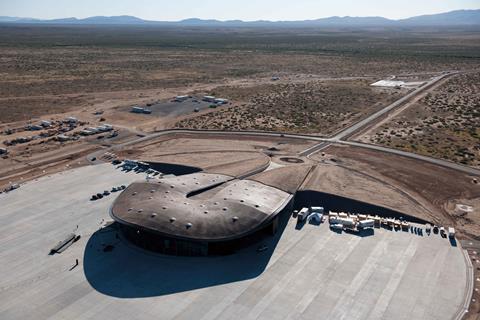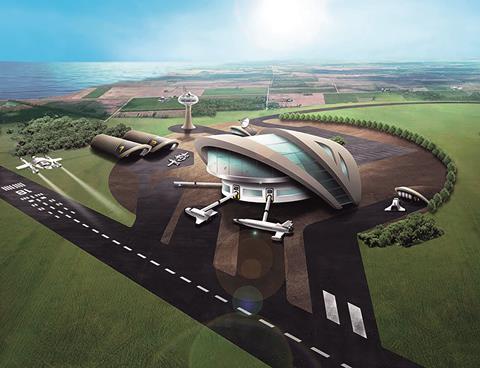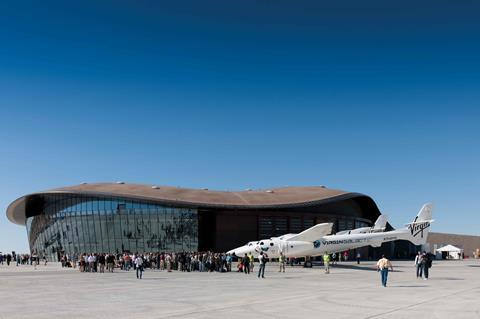Space tourism still has some giant leaps to make before humankind can take a holiday on the moon. Ike Ijeh looks at the progress that’s being made and what’s slowing lift-off for those keen to pack their spacesuits

Last month, we celebrated the 50th anniversary of the Apollo moon landings, the first time humankind landed on the moon. But 50 years ago tomorrow another historic but far less widely publicised event took place. The three Apollo 11 astronauts who had manned the moon landing mission were allowed to leave quarantine. This was significant because while the moon landings proved that travel to the moon was possible, the release of the astronauts back into their normal lives proved that survival on the moon was possible too.
In its own small way, this realisation has helped fuel the colossal impact the 1969 moon landing has had on the human imagination. Despite, or perhaps because of the fact that few people have returned to the moon since, space travel remains the final frontier of human endeavour and the awe it inspires still captures the imagination of billions of people across the world today.
Now holidays are upon us, how close are we to a time when space, or even the moon itself, becomes a vacation destination? Is this still firmly within the realms of science fiction? Or is it something we might be likely to see in our lifetimes? And if it does ever happen, what infrastructure and construction activity will it require here and, more fantastically, in space?
Virgin Galactic space flights will cost a quarter of a million dollars each for a journey that might only spend around five minutes in space
Laura Forczyk, Astralytical

‘Realms of fantasy’
Despite all the technical advances since Apollo 11, the space tourism industry is still infinitesimal in market terms and, in the minds of most, firmly planted in the realms of fantasy rather than fact. Given that we landed on the moon 50 years ago, why is taking so long for the space tourism industry to take off?
Laura Forczyk is a scientist and astrophysicist and the founder of Atlanta-based space-related research, consulting and publishing firm Astralytical. She says there are several reasons the space tourism market has struggled.
“Cost is an obvious barrier – anticipated Virgin Galactic space flights will cost a quarter of a million dollars each for a journey that might technically only spend around five minutes in space – that’s clearly well beyond the realms of possibility for a vast number of people.”
We could operate the system tomorrow; however, there are no regulations allowing space systems to operate in UK airspace
Melissa Thorpe, Cornwall Development Company
Forczyk is also sceptical about the much-levied argument that aviation was also expensive when that technology was first created but is now within the reach of the majority. “There was mass consumer demand for aviation and that helped bring costs down. I do think we will eventually see that level of demand for space travel, just not within our lifetime.”
Forczyk also reveals that the technical definition of what actually constitutes space has caused problems. “Suborbital space travel reaches outer space but doesn’t do a full circuit of the earth; orbital travel does. But there have been constant historic disagreements about where the orbit or space itself actually begins,” she says.
“The Kármán line specifies an altitude of 100km [as where space begins] and is the commonly accepted international threshold. But it’s an approximation based purely on physics, NASA for instance defines space begining at an altitude of 80km. This has a commercial impact because space tourism ventures like Blue Origin (founded by Amazon chief executive Jeff Bezos) aim to offer flights above the Kármán line but several other competitors don’t feel the need to.”
Technology has also been a barrier, with the chemical propulsion system required to fire rockets into space still essentially the same as it was in 1969. Forczyk says: “Chemical propulsion is incredibly expensive. But the increasing use of resuable rocketry has already seen the cost of ticket prices and launches go down.”
But for Forczyk, the biggest barrier to a mass consumer space tourism market isn’t technology or economics but something else entirely: politics. “We landed on the moon purely because of the Cold War. The rivalry between the US and the USSR drove Congress to release the astronomical amounts of money required for space exploration and landing on the moon. While various presidents since have voiced a desire to return, without the kind of geopolitical trigger the Cold War represented, Congress simply isn’t interested in providing the same level and consistency of funding that financed Apollo. It’s enormously frustrating”.

�ڶ����� spaceports
But putting aside politics and economics for a moment, what practically is needed to make any commercial space travel venture possible? The answer is a spaceport – a relatively new typology of building. Dean Lee, head of external engagement for the Spaceflight Programme and the UK Space Agency, describes a spaceport as “a place where rockets and other spacecraft take off to go into space or where they land” and explains that there are two types, vertical and horizontal: “Vertical spaceports will use a launch pad to launch rockets straight up, carrying small satellites into orbit.
“Horizontal spaceports involve spaceflight activities – such as air-launch of rockets from carrier aircraft, or space planes – taking off from a traditional runway. Once the carrier aircraft is in the air and safely away from populated areas, the rocket the aircraft is carrying can detach, ignite, and head into space.
“Horizontal spaceports can also be used to support suborbital activities involving space planes or balloons, such as scientific experiments or tourist flights,” he continues.
While it might surprise some that spaceports are being developed in the UK, Lee describes space as a “growth sector involving commercial pioneers who are beginning to look to earth’s orbit and beyond for new opportunities”. He explains that the “UK’s long coastline and island location make it suited to launch into a range of valuable orbits”.
Accordingly, the Space Industry Act 2018 introduced legislation that allows for the regulation of a wide range of commercial spaceflight technologies and sets a framework within which Lee maintains “suborbital space tourism can be realised”. Additionally, the last government industrial strategy, published in November 2017, set aside £50m to establish commercial spaceflight in the UK, while in June £7.85m from a central and local government fund of £20m was set aside for the construction of a new spaceport at Newquay airport in Cornwall, the first horizontal spaceport in Europe, which has an estimated opening date of late 2020.

As part of this announcement, the UK Space Agency also revealed that a vertical spaceport will be constructed in Sutherland, Scotland, with the intention of launching satellites into space. But while Newquay has “no current plans for human spaceflight” and has also been conceived for the launch of satellites, crucially, its horizontal configuration does open the possibility of it being retrofitted to support space leisure space travel in the future.
As Lee explains, “suborbital or low-gravity activities involve a space plane taking off from a traditional runway, so horizontal spaceports will be most suited to supporting space tourism.”
So, apart from the kind of passenger arrival and departure areas familiar to existing airports, what other physical specifications will spaceports need? Melissa Thorpe of the Cornwall Development Company, which is part of the Spaceport Cornwall consortium building the Newquay facility, explains: “To launch a horizontal system you tend to require a long runway with direct access to the sea, low residential build-up and clear airspace. You also need good airport infrastructure including fuel handling, aircraft handling and taxiways, lighting, radar, air traffic.
“As well as having all this already in place at Newquay airport, we also have one of the longest runways in the UK at 2,744m.”
�ڶ����� spaceports as part of existing airports rather than as standalone facilities is a common strategy that has also been used at proposed US spaceports in Colorado, Florida and elsewhere. As well as the obvious cost saving, it is seen as an efficient way to have direct access to ready-made aviation infrastructure. Thorpe believes future conversion for tourist use would be perfectly possible but would depend on “specific system requirements”, perhaps needing a runway to be extended, for instance.

Regulatory obstacles
In Thorpe’s view, the biggest obstacle to the construction of more UK spaceports is the lack of appropriate legislation and regulations. “We could operate the system tomorrow; however, there are no regulations allowing space systems to operate in UK airspace. We are waiting for secondary legislation to pass later this year or early next year. This will ensure that space launch from the UK is safe, operationally efficient and takes into account environmental impacts and mitigations.”
But of course, it is not UK spaceports that are at the forefront of the pursuit of space tourism but those in the spiritual and historic home of lunar exploration, the US. Twenty miles south-east of the extraordinarily named city Truth or Consequences in the middle of the New Mexico desert lies $209m (£171m) Spaceport America. It fully opened in 2012, and is the first purpose-built commercial spaceport in the world – it can accommodate both vertical and horizontal launch. There is a strong British stake in its design and operation – it was designed by Foster + Partners and is the operating base of Virgin Galactic, which is arguably the world’s most high-profile space tourism commercial venture.
The building, which also offers a public visitor experience, is circular in plan and assumes a low-slung form cut into the landscape. While visitors, astronauts and intended space tourists enter the facility through the same entrance, there is careful separation of public and private areas, with sensitive astronaut facilities and the control room visible but inaccessible from public or tourist areas.
For all its historic significance and radical design, as yet Spaceport America has not sent any tourists into space. Last Christmas, Virgin Galactic successfully completed its first suborbital spaceflight from its former test-flight facility in the Mojave desert, California – giving the first three civilians their spaceflight wings. Further test flights are planned next year, while other space tourism operators, such as Blue Origin and Space X – fronted by notorious entrepreneur Elon Musk – are hoping to operate commercial tourist launches within five years.
Despite the endeavours of Virgin Galactic and its rivals and despite the developments of spaceports across the US and the UK, Forczyk takes a dim view of when space tourism is going to grow into a mass consumer market. “Hotels in space? In my opinion, we’re at least several decades away.”



























No comments yet